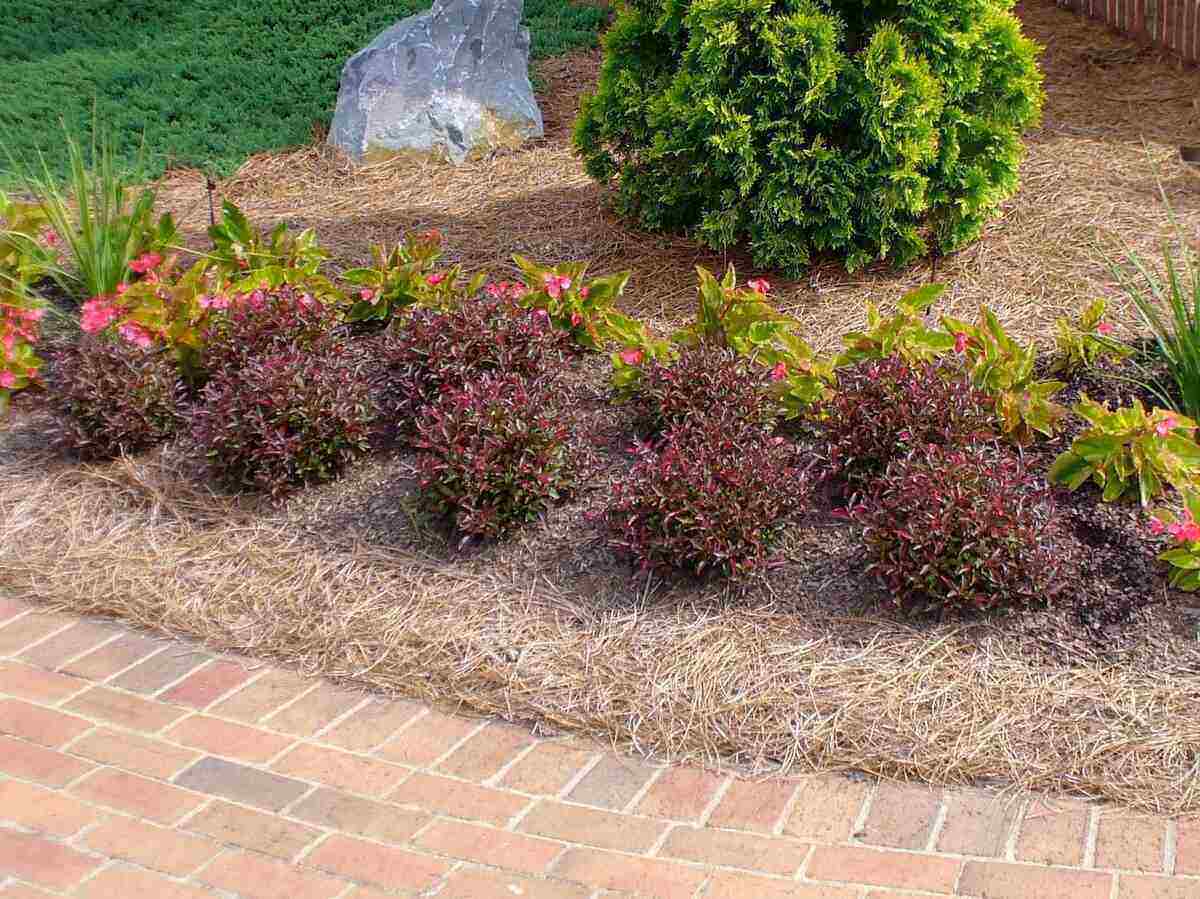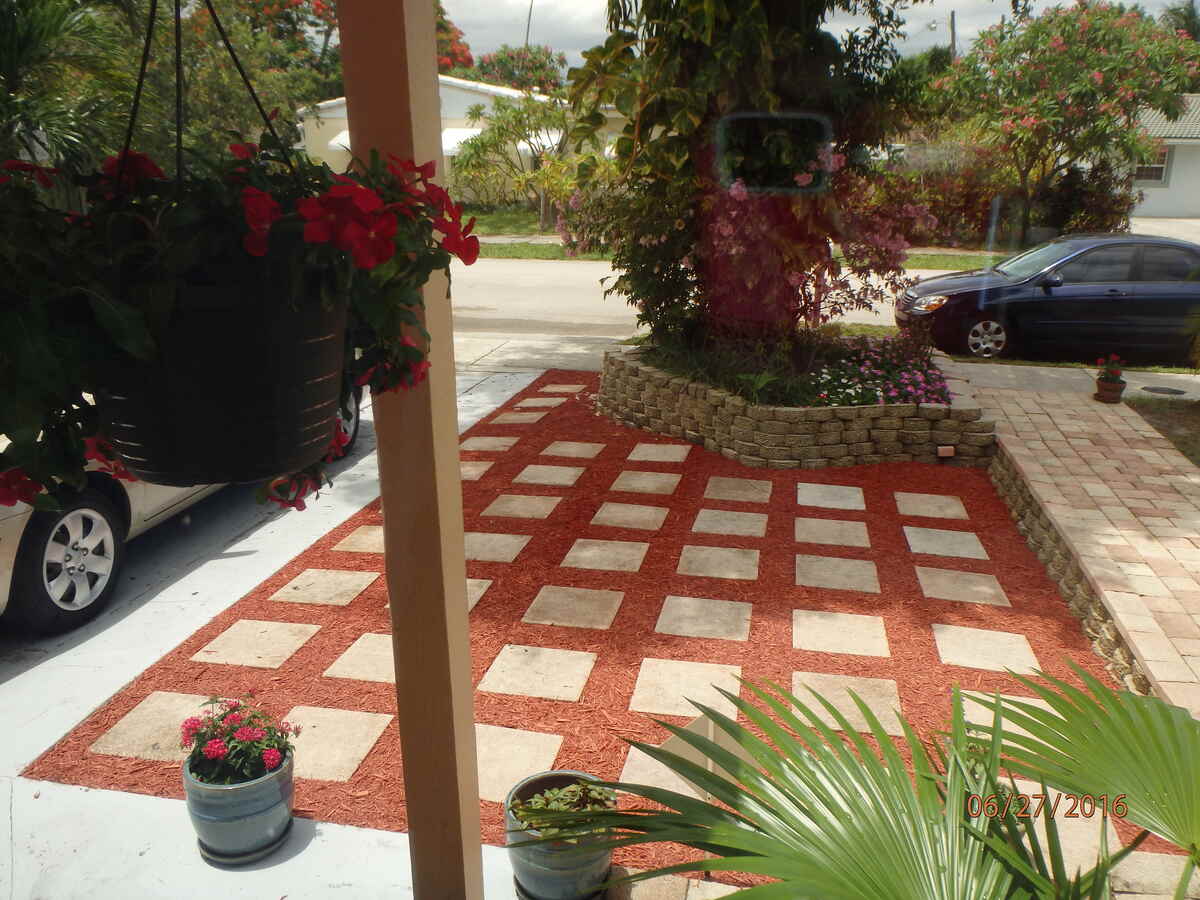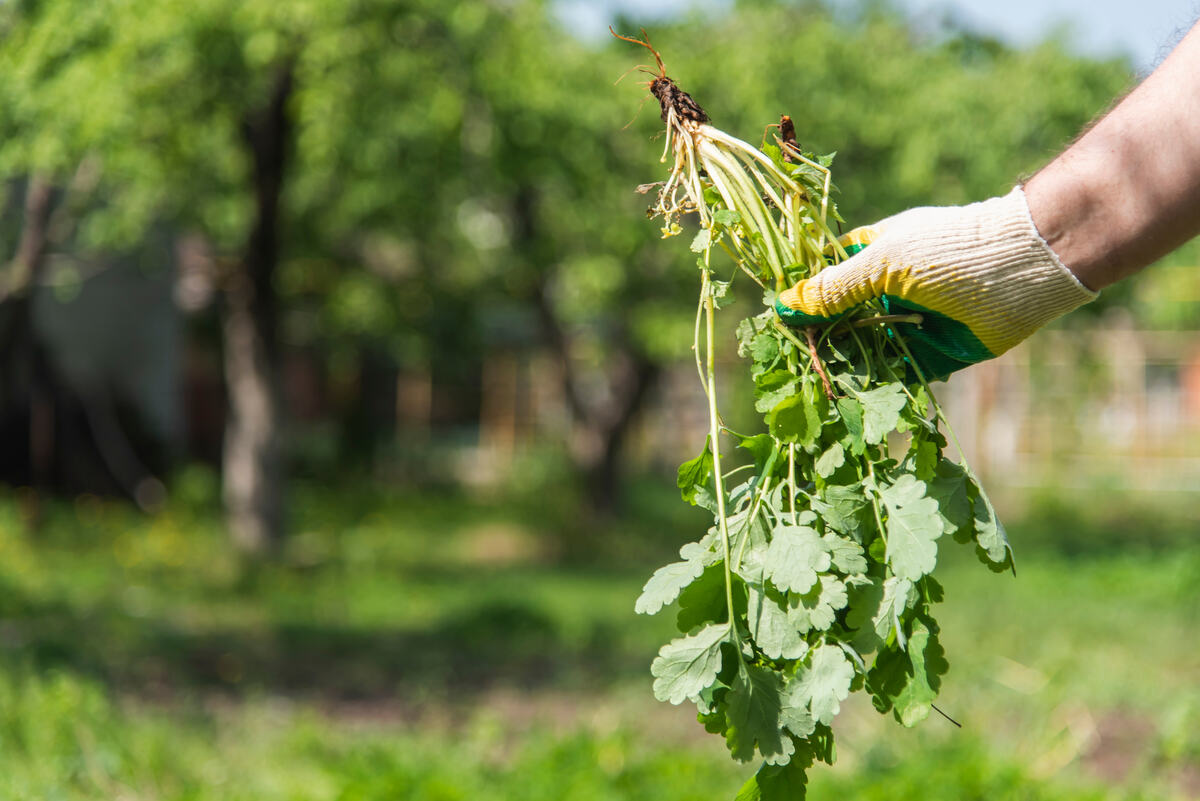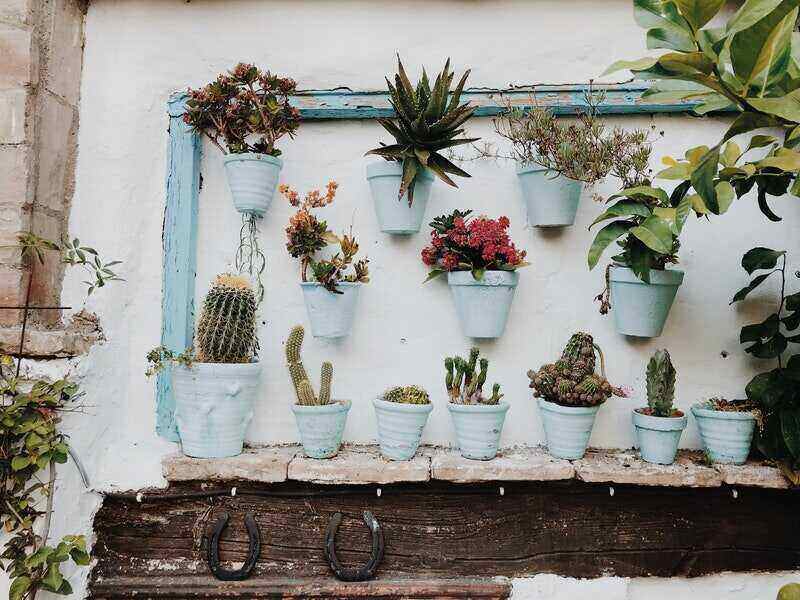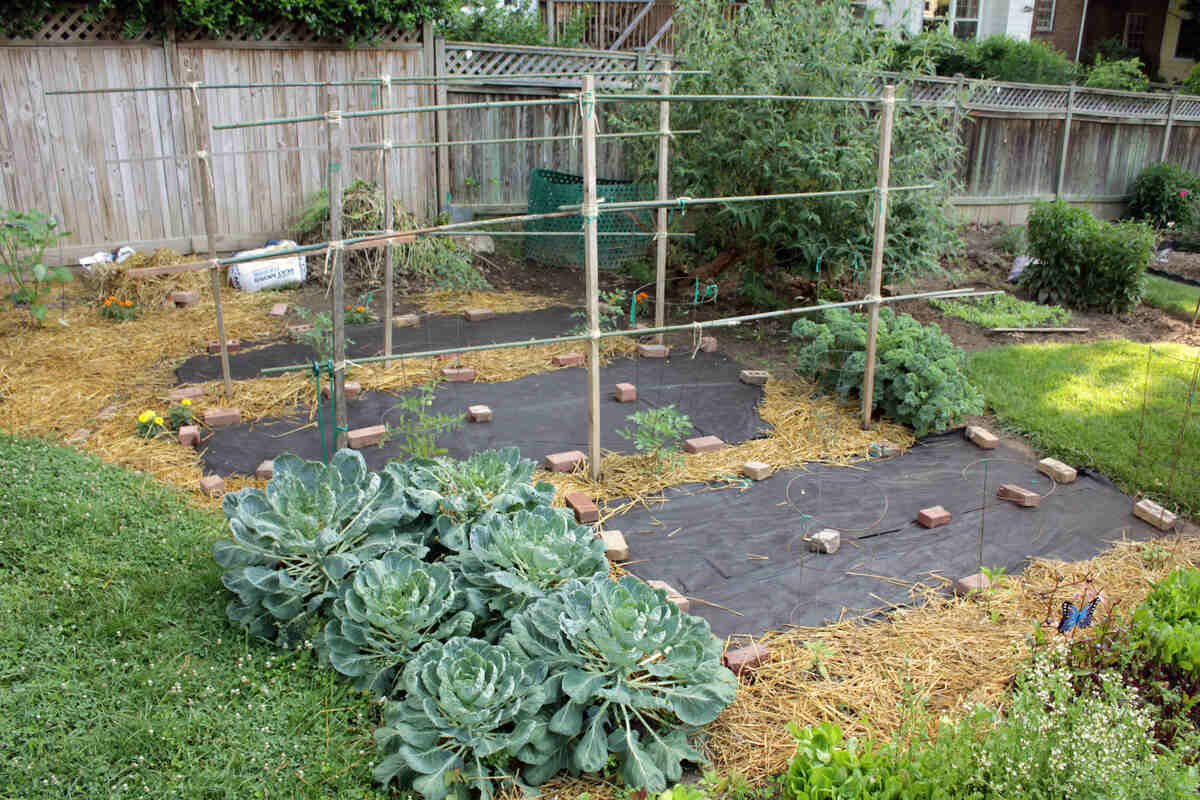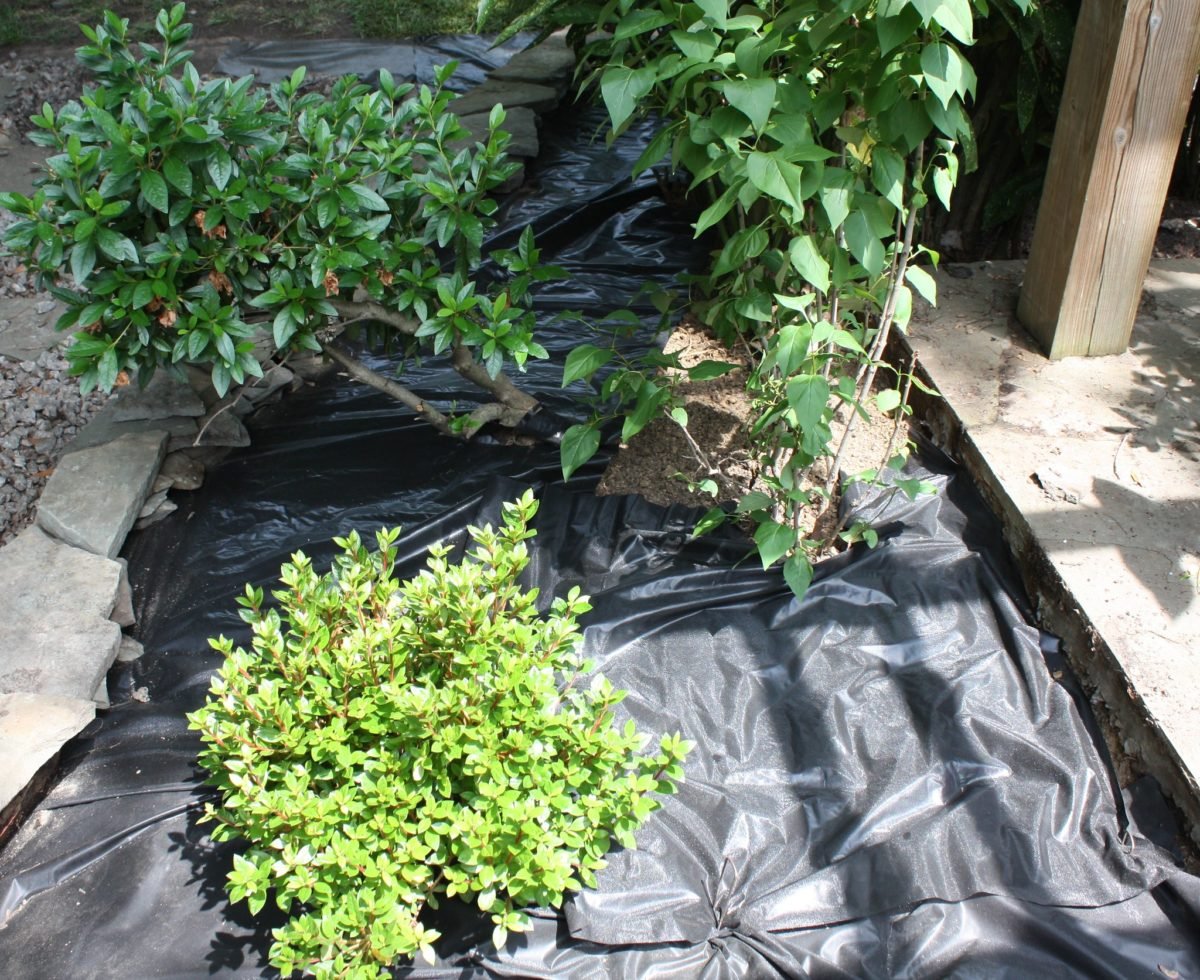
Landscape fabric, when used correctly, can be an effective way to limit weed growth and keep your garden beds looking pristine. It stifles weeds, locks in moisture, and helps with stability.
The use of landscape fabric is not without controversy though. If you’re going to use it, you’ll want to do your research and be aware of the pros and cons of using landscape fabric.
If you are considering using landscape fabric, our guide will tell you what landscape fabric is, the advantages and drawbacks, when to use it, and types of landscape fabric.
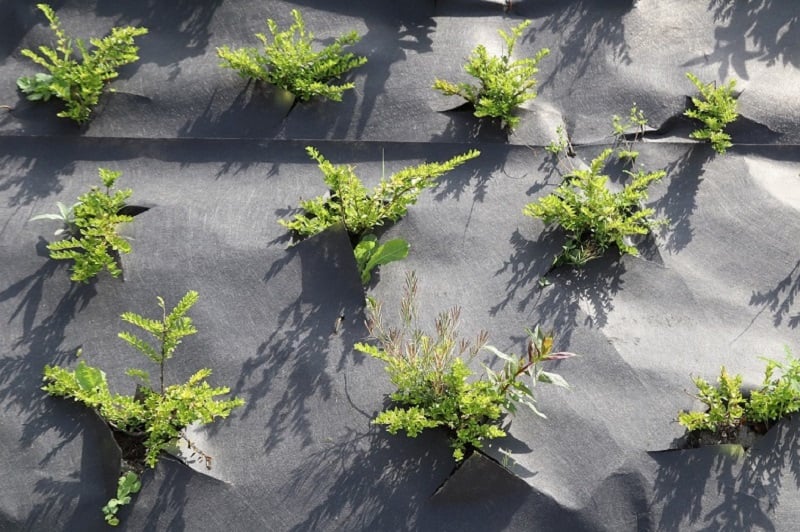
What is Landscape Fabric?
Landscape fabric is material designed to act as a physical barrier between soil and sun. It typically consists of woven fibers or a non-woven material and comes in rolls.
Sometimes referred to as weed block, weed fabric, or weed barrier, landscape fabric is best known as a way to limit weed growth by preventing soil-bound weed seed from getting any sunlight. This reduces your need for herbicidal weed control.
Advantages of landscape fabric
Landscape fabric has a long list of additional benefits besides keeping weeds out of garden beds. The sun-blocking abilities of landscape fabric help soil retain moisture by slowing evaporation.
Landscape fabric also helps with stability and offers a measure of erosion control in areas that are prone to washout with heavy rains. It works great as a barrier beneath hardscaping and prevents inorganic mulch like rocks and pea gravel from sinking into the soil.
Disadvantages of landscape fabric
Those who are thinking about using landscape fabric should consider some of its drawbacks.
Most importantly, landscape fabric doesn’t completely eliminate all weeds. Although it prevents weed seeds in the soil from growing, new weed seeds can still blow into the mulch above landscape fabric and sprout there.
Also, as organic mulches, like wood chips, decompose over time they create a compost that’s suitable for weeds to take root. You’ll need to apply a pre-emergent herbicide to prevent this.
Landscaping fabric prevents the nutrients created by decomposing organic materials from reaching the soil below. It also deters the kind of garden-friendly earthworms that can help aerate the soil.
If these disadvantages outweigh the advantages, there are alternatives to using landscape fabric (cardboard, newspaper, burlap, etc.)
If the advantages outweigh the disadvantages, there are quite a few different varieties of landscape fabric. You’ll want to choose the type that best suits your needs, and our guide will help you make your selection.
When to Use Landscape Fabric
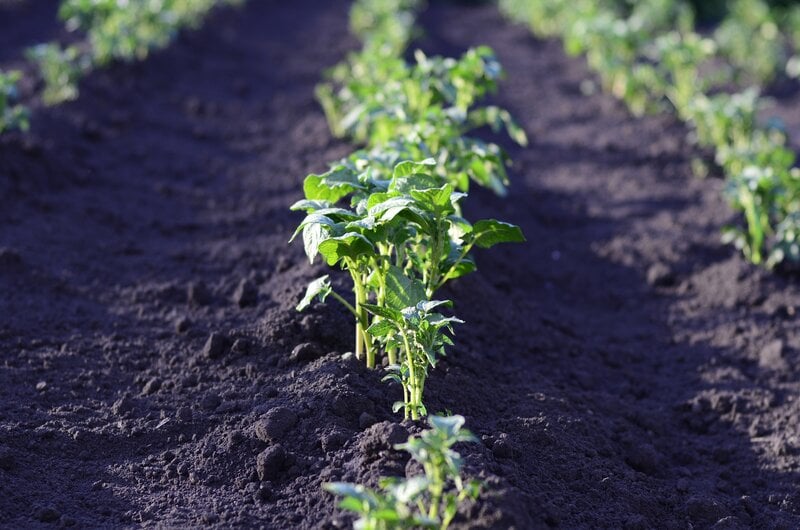
Landscaping fabric is most typically used beneath mulched areas around trees, shrubs, or bushes. Landscape fabric is laid over soil and then mulch is layered on top of the fabric.
Landscape fabric also works well beneath gravel, rock, or hardscaping. It also can be used beneath flower beds or ground cover to reduce weeds and the need for weed control.
Note: Don’t use landscape fabric beneath vegetable gardens or flower beds consisting of annuals since it will make frequent replanting more difficult.
Types of Landscape Fabrics
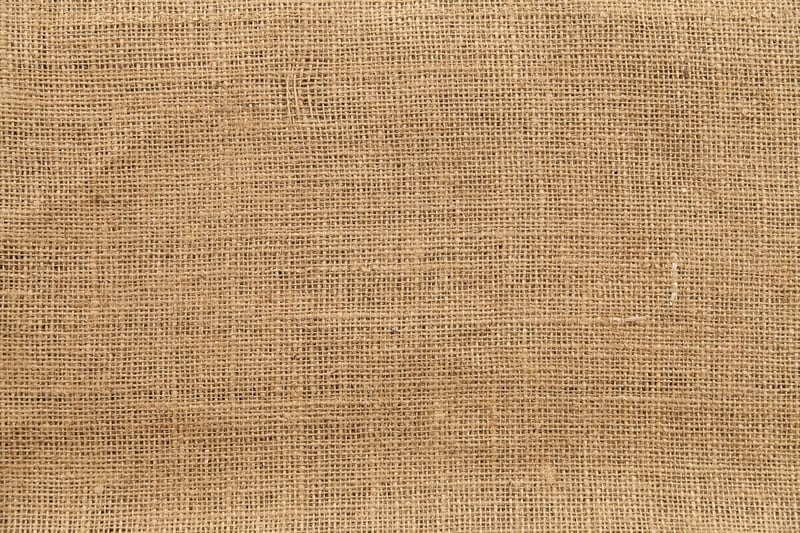
When it comes to landscape fabrics, material matters. While it might seem like a good idea to go for a cheap, plastic weed barrier for any application, you’ll be better served picking the right fabric for your gardening or lawn project.
Here’s a look at some of the types of landscape fabrics:
Woven
Woven landscaping fabric is the most commonly used type. It’s typically made from polypropylene or linen fibers that are woven together to create a durable, semi-permeable material.
Woven landscaping fabric’s small holes allow both water and nutrients to seep through to the earth, while still preventing weeds from growing up toward the sun.
This type is best used as a weed control fabric around trees and shrubs or in flower beds with plants that won’t be changed often. Woven fabrics are usually black, green, or a brown, natural burlap color.
Most options offer some innate ultraviolet (UV) resistance or have been treated to be UV stabilized so that they hold up under the sun.
Cost: Woven landscape fabrics come in rolls of varying sizes that range from $35 for a low-end 3 feet-by-100 feet roll to $280 for a roll that is 10 feet by 300 feet.
Non-Woven
Typically made from polyester or polypropylene, non-woven landscape fabrics are best suited for preventing weed growth in rock or gravel paths or beds.
Non-woven landscape fabrics are less permeable than woven options, so they will prevent water and nutrients from getting to the soil below.
These fabrics offer great stability and prevent stones from sinking into soil. Professional grade versions are often used beneath stone pavers or other large-scale hardscaping.
Cost: Rolls of non-woven landscape fabric range from $20 for a roll that’s 3 feet by 50 feet to $180 for a roll that’s 10 feet by 300 feet.
Spun
This particular version of non-woven fabric is made from layers of bonded polyester fibers that make it extremely durable. It’s the most heavy-duty type of landscaping fabric and is very difficult to rip or tear. The thickness of spun fabric varies widely and makes it viable for many different uses.
With thinner versions of spun fabric, the spun-bonded nature of the material leaves it permeable for water and air, while also being tough and durable. This makes it very versatile. Not only does it work well as a weed barrier in beds and beneath rocks, but it can also be used as a protective border to discourage pests, insects, and invasive grasses.
Thicker fabrics are so tough and impermeable that they can be used in irrigation, drainage, and retaining wall applications to ward off roots and prevent seepage.
Cost: A thin (1.5 ounce) roll of spun fabric will start around $20 for a roll that’s 3 feet by 100 feet, while thicker (3+ ounce) options of the same dimensions will go for $30 or more. A heavy-duty, 8-ounce industrial roll that’s 6 feet by 100 feet runs for as much as $300.
Perforated
Perforated landscape fabrics are usually cheap and lightweight, and designed with pre-cut perforations or holes where you’ll put your plants.
Since perforated landscape fabrics won’t suffocate roots and are easily replaceable, they are commonly used in garden applications where plants are evenly placed and changed often.
For example, vegetable gardens are commonly lined with perforated landscape fabric.
Because they are so lightweight and manageable, perforated landscape fabrics shouldn’t be used in areas with heavy foot traffic, lots of animal activity, or sizable roots.
Cost: These can be purchased in sheets that are 4 feet by 8 feet for less than $10 or in large rolls for as much as $80 for a roll that’s 3 feet by 300 feet.
Now that you’ve selected your landscape fabric…
Once you have purchased your landscape fabric and related stakes, staples and other needed materials, you are ready to learn how to install landscape fabric.
The Cliff Note’s version: Clear out your space, prep the soil, lay down your fabric, and secure it with landscape pins.
Note that once your landscape fabric is installed, you’ll have to repeat the process every two to four years.
FAQ About Landscape Fabric
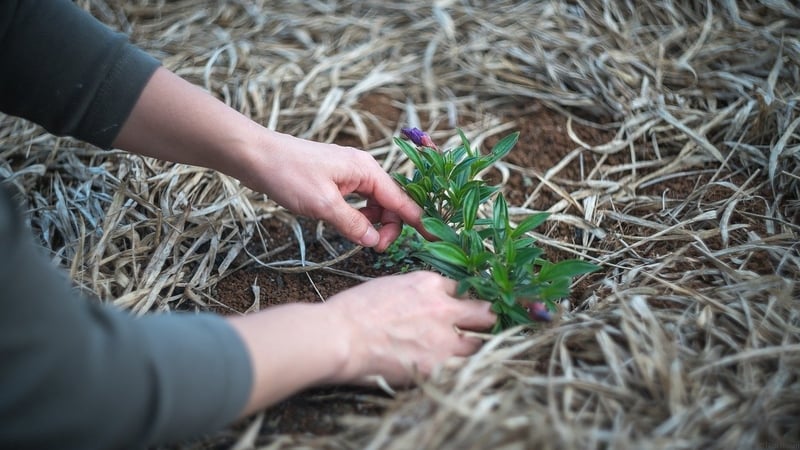
What is the best landscape fabric?
The best landscape fabric is going to depend on what you’re using it for. As a weed barrier around trees, shrubs, and low-maintenance beds, woven landscaping fabrics work best. For stability and weed blocking under rock or gravel, non-woven landscape fabrics work best.
Should you use landscape fabric?
This is a highly debated topic in landscaping. While some people swear by landscaping fabric as a way to limit weed growth, there are others who feel the negatives of using landscape fabric outweigh the positives.
Which is better landscape fabric or plastic?
There are some reasonable situations where landscape plastic might be a better option for you, however landscape fabric has more uses and is typically the better option.
Should landscape fabric go under gravel?
Yes. Putting landscape fabric under gravel isn’t a requirement, but it is recommended. When used under gravel, it provides all the positives of weed control and added stability, without any of the negatives.
Is filter fabric the same as landscape fabric?
No. Although filter fabric is similar and made from the same material as non-woven landscaping fabric, filter fabric is generally thinner and won’t be treated for UV protection.
When to Call a Landscaping Professional
Considering all of the variables that go into deciding whether or not to use landscaping fabric, it might be worth your time to consider leaving the installation to a pro.
Call a landscaping professional near you if you need help making the most of your landscaping project.
Whether you end up using landscaping fabric or not, using a professional landscaper can be the difference between enjoying your ideal yard and suffering through a DIY nightmare.
Main Photo Credit: Beachbums3 / CC BY-SA 2.0
